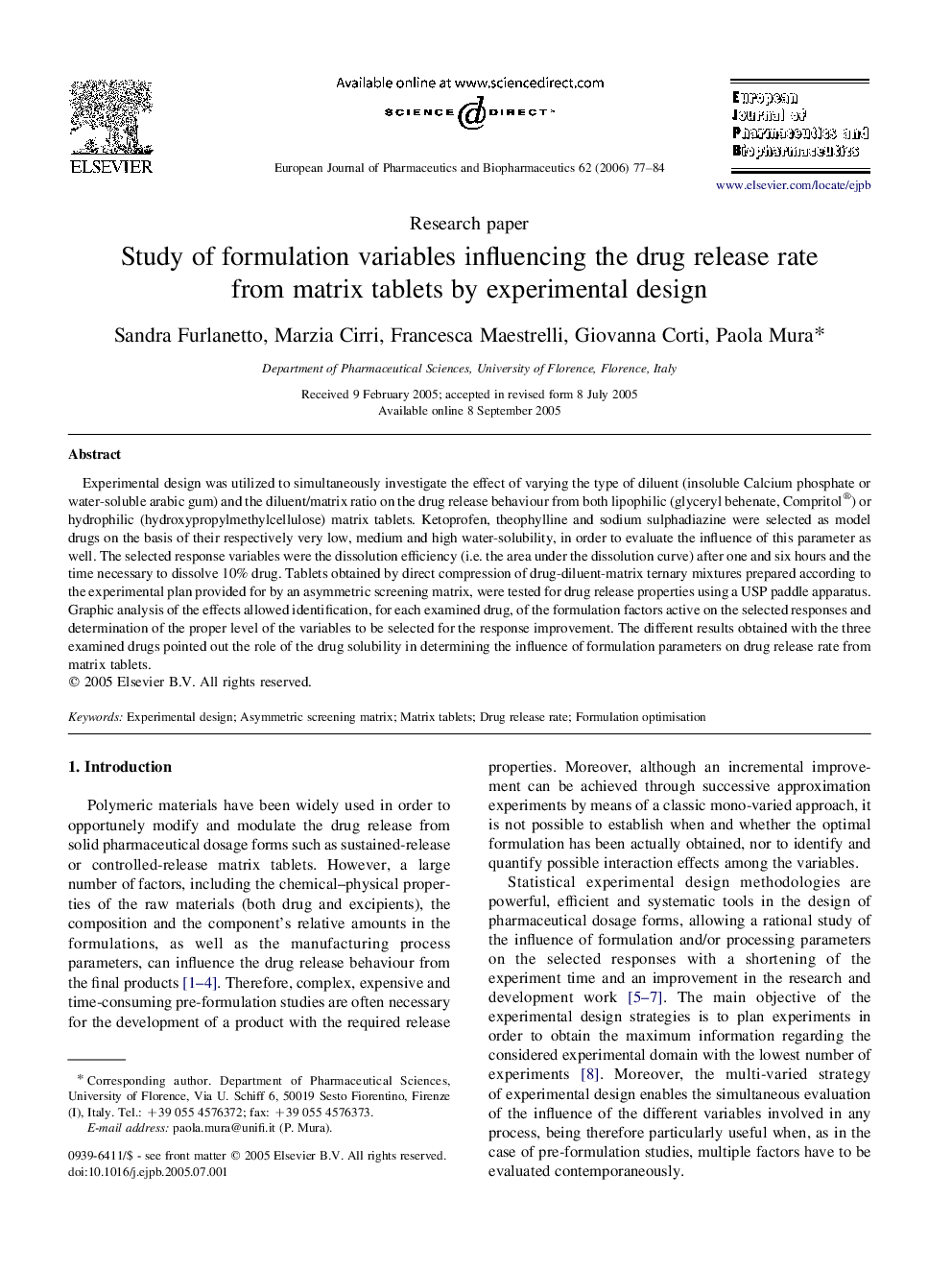| Article ID | Journal | Published Year | Pages | File Type |
|---|---|---|---|---|
| 2085080 | European Journal of Pharmaceutics and Biopharmaceutics | 2006 | 8 Pages |
Experimental design was utilized to simultaneously investigate the effect of varying the type of diluent (insoluble Calcium phosphate or water-soluble arabic gum) and the diluent/matrix ratio on the drug release behaviour from both lipophilic (glyceryl behenate, Compritol®) or hydrophilic (hydroxypropylmethylcellulose) matrix tablets. Ketoprofen, theophylline and sodium sulphadiazine were selected as model drugs on the basis of their respectively very low, medium and high water-solubility, in order to evaluate the influence of this parameter as well. The selected response variables were the dissolution efficiency (i.e. the area under the dissolution curve) after one and six hours and the time necessary to dissolve 10% drug. Tablets obtained by direct compression of drug-diluent-matrix ternary mixtures prepared according to the experimental plan provided for by an asymmetric screening matrix, were tested for drug release properties using a USP paddle apparatus. Graphic analysis of the effects allowed identification, for each examined drug, of the formulation factors active on the selected responses and determination of the proper level of the variables to be selected for the response improvement. The different results obtained with the three examined drugs pointed out the role of the drug solubility in determining the influence of formulation parameters on drug release rate from matrix tablets.
